#ludmir
Explore tagged Tumblr posts
Text


Medianoche (Kehos Kliguer)
«Sombras sobre el mar ¿De dónde brotarán tantas sombras sobre el mar sin luna? El barco lleva sus luces apagadas. En la medianoche duermen las cabinas. Mis ojos posados sobre el enorme océano aterrador se beben las sombras. ¿Y no serán todas las sombras, una sola, yo mismo? ¿Y hasta cuándo habrán de perseguir al barco por las altas aguas del Ecuador? Todo alrededor, encima y debajo, oscura, secreta abisalidad. Hümedo trópico en la profunda garganta negra de la noche. El cielo sin estrellas se vuelve nube cercana, lluviosa. Sombras sobre el mar. Sueños rasgados en la espesa oscufidad cargada de oleaje. Mis ojos sueñan en el mar y se beben las sombras.»




Midnight (Kehos Kliguer)
“Shadows on the sea. From where do so many shadows come on the moonless waters? The ship lights are out. At midnight the cabins sleep. My eyes gazing at the enormous terrifying ocean and drown in the shadows. And might not all the shadows be only one. I, myself? And until when will they chase the ship on the high Equator waters? All above, above and below dark, secret abyss. Humid tropic in the deep black gorge of the night The starless sky becomes a nearby rain cloud. Shadows on the sea. Dreams rent in the thick darkness riding on waves. My eyes dream in the sea and drown in the shadows.”


#medianoche#poema#argentina#pionero#cultura judía#judaísmo#judaism#jumblr#antisemitismo#antisemitism#jewish#judío argentino#jewish argentine#poeta#Kehos Kliguer#ludmir#imperio ruso#1930#Kehos Kliger#poeta yidis#volodymyr#diáspora argentina#latin american jewish studies#estudios judíos latinoamericanos#literatura en yidis
5 notes
·
View notes
Text
1/ 8 Jewish Characters You Won’t Believe Are Real - #6 is straight out of a movie! Jewish history is wild—pirates, gangsters, boxers, explorers, and weirdos. Here are 8 larger-than-life Jewish characters you probably didn’t know about.👇Let’s dive in! A short thread 🧵

2/ #1 on our list is the Jewish pirate who masterminded history's greatest heist. Moses Cohen Henriques was no ordinary pirate—he was a Sephardic Jew with a thirst for revenge against those who had expelled his family and community. Born in Portugal, Henriques fled to the Netherlands to escape the Inquisition. But escaping with his life wasn’t enough - he struck back at his oppressors in the most audacious way imaginable. In 1628, Henriques raided the Spanish Silver Fleet on the high seas, taking 11 million guilders’ worth of silver—enough to fund the Dutch war against Spain for years. And he didn’t stop there. Henriques turned Jamaica into a pirate haven and continued to lead daring raids on Spanish ships and settlements. Unlike most pirates, Henriques wasn’t just in it for the loot—it was sweet revenge against Spain’s brutal persecution of the Jews. 🏴☠️✨

3/ #2 is the feisty “bodyguard” who also did magic tricks - and changed history! Morris "Two-Gun" Cohen was born in London and raised in Canada. Armed with street smarts and plucky ambition, he became the personal bodyguard to Sun Yat-sen, father of modern China. Cohen was known for always carrying two pistols (that’s how he got his nickname), but guns weren’t his only trick. He entertained soldiers and diplomats with sleight-of-hand magic tricks and a larger-than-life personality. Fluent in Yiddish, English, and Chinese, Cohen navigated war zones and death-defying encounters. From the mean streets of London’s East End to the revolutionary hangouts of China, Two-Gun Cohen’s story feels straight out of a Hollywood movie—except it’s all true. 🔫🎩🔫
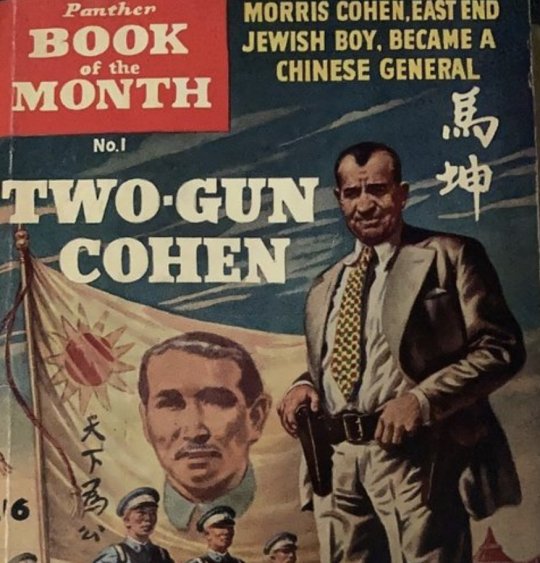
4/ #3 was the Jewish kingpin of London’s underworld. His name was Jacob Colmore, but he was better known as "Jack Spot" – he wasn’t just a lone gangster, he ran London’s criminal underworld in the 1940s and 50s. Renowned for his charm, charisma, and ruthless tactics, Jack built a crime empire that dominated the UK capital. He masterminded daring robberies that made national headlines, including some famous jewel heists. But his reign wasn’t without drama—Jack’s rise to power was marked by infamous clashes with rivals, most notably a brutal knife fight on the streets of Soho that cemented his reputation as a fearsome toughie. 🗡️💎

5/ #4 is a strange one - the woman who became a Hasidic rebbe! Meet Hannah Rachel Verbermacher, remembered by history as The Maid of Ludmir.Born in 19th-century Ukraine, she is the only known female Hasidic “rebbe” in Jewish history. After experiencing a mystical moment near her father’s grave, she began teaching Torah and offering guidance to followers. Her fame soon spread, and she drew crowds of devoted Hasidim who saw her as a spiritual leader and miracle worker. Her success shocked the male Hasidic establishment. She was pressured to marry and abandon her leadership, and her influence soon declined. But The Maid of Ludmir remains a powerful, surprising, and diverting symbol of defiance, who broke boundaries in a rigid world. 🕯️✨
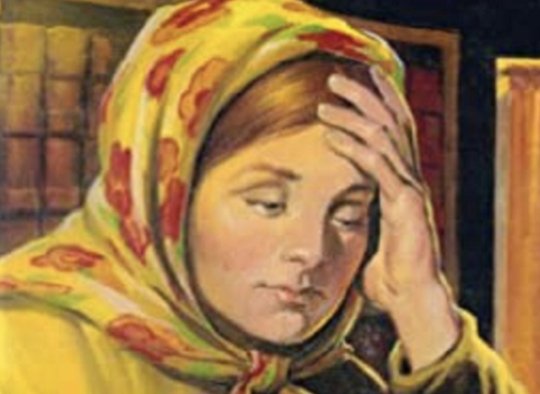
6/ #5 - the Jewish boxing champ who redefined the sport. Daniel Mendoza wasn’t just a boxer—he was a trailblazer who revolutionized boxing in the 1790s. Even today, he’s known as the “father of modern boxing.” He introduced defensive techniques and strategy, transforming the brawling style of his era into a carefully calibrated science. Beyond the ring, Mendoza was a celebrated writer, and he wrote one of the first boxing manuals: The Art of Boxing. Mendoza’s influence also extended beyond sport—he used his fame to challenge antisemitism in England, proving that a Jewish man could embody physical strength, literary success, and successful social activism. From pugilist to pioneer, Mendoza’s legacy lives on. 🥊📖
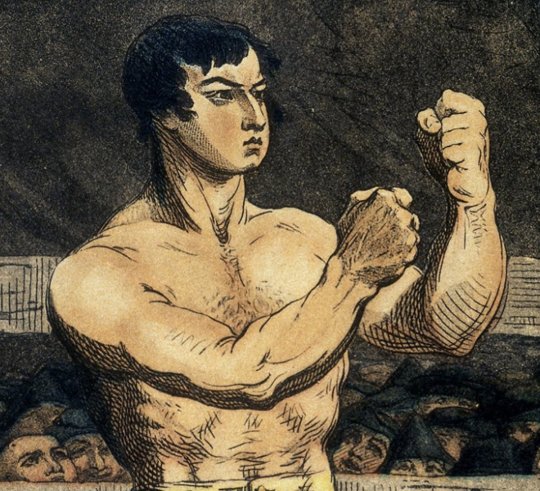
7/ #6 is a real strange one. David Reubeni appeared in Italy in 1524, claiming to be a prince from a lost Jewish kingdom. According to him, his brother Joseph ruled over the “lost tribes” of Gad, Reuben, and half of Manasseh, in a desert kingdom near Arabia. Reubeni claimed to be commander of their army. The crazy thing is – lots of people believed him! He told everyone he could get an audience with that he wanted to forge an alliance between his kingdom and European powers, and lead a Jewish army to reclaim the Holy Land. Reubeni’s exotic charisma won over popes, kings, and emperors, including Portugal’s King João III. But his schemes eventually unraveled when his ambitious partner, the self-proclaimed messiah Solomon Molcho, was executed. Reubeni was also arrested and he later died in prison. To this day, his true identity and motives remain shrouded in mystery. 🤔🕍

8/ #7 is a fantastic story - the first person to explore the entire Amazon! Pedro Teixeira was a Marrano (secret Jew) from Lisbon who loved adventure and blazed trails across the globe in the 17th century. He is believed to be the first Jew to circumnavigate the globe. But his most remarkable achievement was becoming the first person to make a continuous journey up the Amazon River, charting uncharted territories and paving the way for future exploration. Teixeira’s expedition provided invaluable knowledge about the Amazon’s geography, wildlife, and indigenous cultures. Despite the risks of being a secret Jew under constant threat of the Inquisition, Teixeira’s daring ventures left a legacy that cemented his place in exploration history. 🌍

9/ And finally, #8 - the Jewish strongman Siegmund "Zishe" Breitbart. Known as the “Iron King,” Breitbart was a Jewish circus strongman who dazzled audiences across Europe and America in the late nineteenth century and early twentieth century. He could bend iron bars, pull wagons with his teeth, and lift horses on his shoulders. A blacksmith by trade, Breitbart turned his physical strength into a legendary act. His fame grew even more when he combined his incredible strength with Jewish pride, often performing in front of shocked crowds while draped in a tallit! Breitbart became a symbol of Jewish resilience at a time of rising antisemitism, proving that Jews weren’t just Talmud scholars and businessmen—they could also be superheroes! 🏋️♂️✨


10/ Know any other wild and wonderful Jewish characters—pirates, gangsters, explorers, or weirdos—that should be on this list? Drop them below!
@pinidunner
21 notes
·
View notes
Text
El Chavo del 8 entrevista con el periodista peruano Pepe Ludmir (1976) Parte 3
2 notes
·
View notes
Text
Names generated from Bulgarian and Italian forenames, cities/towns in Abruzzo (Italia) and Bulgarian municipalities, excluding the letter "C"
Abogdas Abrafili Abruna Abryamokova Adimitsano Adimol Adolzania Adostano Aglitema Agorsa Alagliel Albequaro Albeto Aldzha Alomih Alomino Aloruh Aluigna Alvisla Amarsito Ambaratkar Ambero Amezzo Andilipale Andino Andriano Antine Antingra Anzatina Apiano Appezho Aquida Aradisi Araiesi Aranalveto Arizhava Arrovits Arvenevayna Asandoria Aspetoia Athina Atolzandovi...
Baligio Balvissa Barano Baredon Barile Barsondran Basseptero Belina Belise Bernop Beroda Berrazd Berven Bimili Bistorniano Bitarmesa Bitertopote Bolamo Bologoto Bolontito Bolyanfrey Boraiana Boreannino Boryano Boseno Bottorna Bovettown Boyano Bozniano Bradavito Brappetina Brayrebate Breanalanna Briena Brillivko Brinedo Briono Bruselo Busannovo Bussapella Dambastian Dandona Daselag Dasellomovo Delmolo Deonteon Derkovts Dezian Dimellana Dimonezhada Dindrosene Dineterigna Domele Donitsan Donstazzo Drazko Dressel Drongra Dualbento Dzhifono Edkovo Elessilva Emilvita Emiradran Emmada Emonette Emvitaza Erbolino Erezzo Ertano Ettorno Euteruzhio Evantivil Fananne Farandra Fauline Feditsa Fermelatina Fetramil Fillovo Filono Flaveli Floguigo Foggin Frazzora Freanna Frezimirdan Friano Fuliberdi Fullava Furinotei Gaglina Gagorasseta Gagraki Galavrana Galetnite Galtilyulya Galtonino Gamino Garena Gareva Giandiyaka Giarsan Gidity Gilegliella Giontano Giudmile Giuliani Giulvi Godoristina Gomantina Gortanio Gotsano Gradona Grieti Grimpotto Grumona Guildon Gusadei Habrina Ilipavignia Imilla Imirayko Imirazia Imonteli Imonto Inasto Initsa Isante Isavessildo Islaurosla Islavituto Iuggio Ivarine Ivinel Ivnitorvo Jorniana Jossermon Kalfets Kalvent Khrigna Kopolila Koppeni Kosherska Kranka Kravlaberi Kressankari Krudmilia Krumillo Krusha Ladele Lagardzh Lamesnetra Lanari Lartomano Lauses Lavenik Lerrusela Liiano Lipaghelev Lodostera Loggiana Lomontrea Lontole Ludmir Ludmira Lupaolaka Lutrezzo Lyanduy Lyarko Lyarumeli Lyubasta Madriana Maltsvil Mandolyano Mandranka Manfrea Mapesio Mappeleveno Maratino Marayka Marbistits Mardino Mardola Marena Marisano Markalen Marmil Marogra Maroyano Marpiano Maruzzovo Masabri Mastoredo Matsaledovo Maurozdrya Maurtaristo Mausarno Meliian Mildzh Miliia Millio Minovo Mirdzh Mirpale Mitrinaia Mondrin Moneren Monetan Monevo Movgrina Movgrovo Muille Murevo Murosa Narenza Narsognya Nasoroselo Navelizzo Navnya Nolatil Nuellia Ofediyazi Omatemeni Opoligevna Oriamonza Orindo Orragata Orrezzo Oryana Ostefatte Ovgrina Pagalla Pagate Palbequo Palforovo Pandin Panopoli Paolad Paolieto Pardina Pasqua Passaka Paurina Pelian Penereveva Penerorida Pennie Penvesh Penzio Penzovo Perahino Pessania Petalomitte Petopalino Petradri Petrodas Petsava Piedenzabra Piellanio Pielle Piellekko Pizioemolio Plietutra Plissa Plottono Plovanla Polelina Poliano Poliniano Pomono Poppielle Porezzo Poryakriole Pralieto Pregna Presto Prettodo Prumoro Radolizio Radrazkovts Raframo Raguaran Ranpagna Ratatagli Reksale Revesa Riandobasa Rignadeo Rignili Rionte Risava Riselo Rissana Rodene Roguevo Romano Rontorev Roppopo Rornel Rosellago Rosvia Rottino Ruerratino Rumeonte Runzano Rusegli Rutirpito Saedenna Saleni Sampiano Sanapeldan Saspela Sassimo Saurginet Saveti Sebelliano Seleglio Septettanil Sevoriando Shtipiano Sianosa Slalil Slatavano Slavithina Solovo Sontete Sopogo Spatra Spavlai Stallia Stameslano Stateo Stellana Steonia Stonsaedora Striden Suhinata Suliia Sungelino Susalfebero Suvoggio Svetlanovo Svetro Syradko Tannikar Tanpielia Tanzonto Tarpinofil Tathina Tefaelaria Tessas Thello Thenno Tingusano Tompelav Toradulo Torgorev Torsioevo Tradas Tralisla Tratoryan Tredeno Trinovoro Trovina Tryano Tseggiul Tsimili Tulatto Tutefio Tutizio Tzvenne Ubozha Udimar Udmillavito Udopritilvi Valeggio Valena Vanarbotto Vanitsa Vankarav Vasisa Vaylomone Vellav Vellavlia Ventin Verinteia Vesevorna Vetsabravio Vettia Vettordia Vevalko Vezzol Viandomone Viglina Vingullogna Vitergia Vrietrina Yorskori Yubolator Zhiorvo Zhupnikol
#444 names#444names#fantasy names#name stash#names#markov gen#fantasy name#dnd names#character names#random fantasy names#markovgen
2 notes
·
View notes
Link
At dusk [on July 10, 2004], a few dozen women will gather in the garden of Ruth Gan Kagan, in Jerusalem’s Baka neighborhood, in order to mark a special event: the 116th anniversary of the death of Hannah Rochel Verbermacher, the Maiden of Ludmir, a solitary women from the town of Ludmir, in Ukraine (during her lifetime the town was part of the Russian Empire), who gained fame as an admor (Hasidic teacher and master). She prayed in a tallit (prayer shawl) and tefillin (phylacteries), and like her male counterparts she held a “third meal” for her followers (the meal eaten on Shabbat afternoon, which is pervaded by a melancholy feeling because of the imminent conclusion of the Sabbath) at which she expounded on the Torah. She also received Hasidim who had questions on religious matters and granted them blessings.
…The 116th anniversary is not a round year, but it is nonetheless a special date. On Sunday, which is the exact memorial day, Verbermacher’s admirers will visit her grave, on the Mount of Olives in Jerusalem. The grave was discovered only a year ago [2003] by Nathaniel Deutsch, a Jewish researcher from Pennsylvania (where he is an associate professor of religion at Swarthmore College). On October 2003, after several years of research, Deutsch published “The Maiden of Ludmir: A Jewish Holy Woman and Her World” (University of California Press).
In the past few months, Kagan organized the establishment of a fine headstone on Verbermacher’s grave (the original stone was apparently shattered during the period of Jordanian rule in the city and there is no record of what it said), which will be unveiled on Sunday. The new headstone deliberately makes no mention of her function as an admor; the formulation on the headstone, “a just rabbanit” - a word usually used for a rabbi’s wife - is the term by which she is referred to in contemporaneous archives…
Verbermacher settled in the Land of Israel when she was in her fifties, following a wave of harassment on the part of the Hasidic community in which she lived. As far as is known, she continued to act as an admor in Jerusalem, too. Because “maiden” is a pejorative epithet that was foisted on her by her opponents in the religious world, Kagan and her group do not use it and prefer to refer to her simply as Hannah Rochel.
…Studies of Hasidism also mention other women who gave Torah lessons and blessed the Hasidim, though they were all wives or daughters of well-known rebbes (the best-known of them is Udel, the daughter of the Ba'al Shem Tov, the founder of Hasidism) whose family lineage made possible their anomalous behavior. Verbermacher, in contrast, is the only woman who functioned as a genuine admor, and without enjoying the protection of a prominent lineage. (She did have another form of “protection.” The large inheritance she received from her father, who was a merchant, meant that she was not dependent on the economic favors of her surroundings.)
…[T]he gossip-mongers claimed that she not only behaved like a man but that her voice was also masculine, giving rise to the allegation that she was possessed by a dybbuk, or evil spirit. Deutsch thinks the story served as a model for the playwright S. Ansky, author of the famous Yiddish play “The Dybbuk.” Its plot does not follow the story of Hannah Rochel in all details, but there are many similarities (a woman with a masculine voice, a forced marriage, a holy man who seeks to exorcise the dybbuk, and so forth). There is no clear-cut proof of this, but Deutsch found at least circumstantial evidence. Ansky, he discovered, visited Ludmir twice in the years before he wrote his play and interviewed residents there about the story of the “maiden.”
Verbermacher later immigrated to Ottoman Palestine. In the popular account her move was caused by persecution, though Deutsch conjectures that one reason may have been the fact that many Hasidim moved to the Land of Israel around this time - it was a period of messianic hopes among Eastern European Jewry. The exact year of her immigration is unknown, but it was probably in 1860.
In the Montefiore Archive in London, Deutsch found two mentions of Verbermacher’s residence in Jerusalem, in two different censuses conducted by Sir Moses Montefiore in 1866 and in 1875. The same source turned up the year of her birth: 1805. In each census, by the way, she appears under the category of widows (the overall name then assigned to single women) and is said to belong to the “Old Wohlin kolel” (kolel now means a yeshiva for married men but at the time referred to a community). The first census lists her as “rabbanit Rochel Hannah,” from Ludmir, the second as “the just rabbanit Hannah Rochel from Ludmir.”
…[Hannah Rochel’s new] headstone was designed by the architect Avigayil Zohar…who was also long familiar with the story of the “maiden” and was thrilled at the privilege that befell her. The design, Zohar says, “was determined by a number of criteria, especially by the request of the burial society that the headstone not stand out from the rest of the headstones in the area. They were also opposed to the building of a `tent’ (a structure in which visitors can congregate, as is common with graves of important rabbis and admors). In light of the possibility that the grave will become a site of pilgrimage, we also saw to it that a place for candles was hewed in the stone, and after the headstone is in place we will also hew a place for kvitlech (notes containing requests and wishes, such as are placed at the Western Wall and at graves of admors).”
Schechter hopes that in the wake of the book’s publication and the unveiling of the headstone, lost writings of Verbermacher will also turn up. According to an article published in 1952, only four sentences from her sermons have been preserved. “Every pure thought that stems from the heart cannot be grasped by the mind,” she said…
[Yair Sheleg’s full piece is at Haaretz]
40 notes
·
View notes
Text
@reconditarmonia said: That’s so cool! (But also, have we already talked about The Dybbuk?)
I feel like we have, but then I went to Wikipedia to read the summary and I don’t remember this???
#'the Maiden of Ludmir who was also rumored to have been possessed thus explaining her perceived inappropriate manly behavior'#YO!!!! IT'S THE THING!!!!#I'VE WRITTEN PAPERS ON THIS THING#Queenie actually says something on this blog#I should clearly look into this more once I'm back Stateside
1 note
·
View note
Text
found a pdf of a book about the maiden of ludmir...... this might give me the temporary ability to read
6 notes
·
View notes
Photo
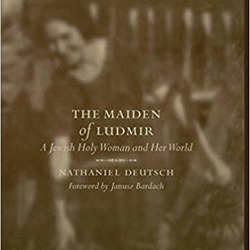
The Maiden of Ludmir: A Jewish Holy Woman and Her World by Nathaniel Deutsch Hannah Rochel Verbermacher, a Hasidic holy woman known as the Maiden of Ludmir, was born in early-nineteenth-century Russia and became famous as the only woman in the three-hundred-year history of Hasidism to function as a rebbe―or charismatic leader―in her own right.
1 note
·
View note
Text
Canal 5. Panamericana Televisión
Panamericana televisión, directamente subsidiada de NBC, fue la segunda cadena con fines comerciales en Perú, fue la primera en producir productos narrativos en la televisión peruana. En 1958 tomó el canal 5. Fue fundada por Genaro Delgado Brandt y Genaro Delgado Parker y Manuel Delgado Parker. También fue el primer canal en tener un noticiero.
Genaro Delgado Brandt es propietario de varias estaciones radiales en el Perú desde 1937, de las cuales en sus inicios la más característica era Radio Central. Luego, Delgado Brandt funda en 1953 la Empresa Radiodifusora Panamericana S.A., en donde Radio Panamericana era la emisora principal del grupo. Pero en la actualidad la radio y televisión del mismo nombre no son unidos.
Genaro Delgado Brandt tuvo varios hijos, de los cuales Genaro, Héctor y Manuel se vincularon al negocio paterno. En 1956, Genaro Delgado Parker estudió la factibilidad de la instalación de un primer canal de televisión para el área metropolitana de Lima, y para ello viaja a Estados Unidos, México y Cuba a fin de conocer lo último en televisión. Las gestiones Parker culminan con la instalación de una de las primeras emisoras de televisión peruana.
Para el equipamiento técnico, Genaro obtuvo un crédito de la empresa transnacional Philips; para el respaldo financiero se asoció con Don Isaac R. Lindley Stopphanie, dueño de la empresa fabricante de la bebida gaseosa Inca Kola, con lo que logra formar Panamericana Televisión. Y a través del magnate de la televisión cubana Goar Mestre, accedió al conocimiento de la producción técnica y a la asociación con la cadena de televisión estadounidense CBS. De esta manera, el 21 de julio de 1957 se inauguran dos sociedades: Panamericana Televisión S.A. que operaría la estación de televisión; y otra, Producciones Panamericana S.A., destinada a producir programas de televisión.
Panamericana Televisión S.A. estaba integrada por Genaro y Héctor Delgado Parker, la Empresa Difusora Radio-Televisión, S.A. (de la que era accionista Genaro Delgado Brandt), Isaac Lindley Stopphanie y su hijo Isaac Lindley Taboada. Mientras que Producciones Panamericana S.A. fue integrada además de Genaro y Héctor, el grupo empresarial de Goar Mestre, Manuel Ulloa Elías y la CBS. El Estado ya había concedido con anterioridad la frecuencia entre 210 y 216 MHz, Canal 13 en Lima a la Empresa Radiodifusora Panamericana S.A., que luego cedió todos sus derechos a Panamericana Televisión S.A.
El 16 de octubre de 1959 se inauguró Panamericana Televisión OBXY - TV Canal 13, con un espectáculo musical en el que intervino la actriz española Carmen Sevilla, y utilizando la misma identificación de Radio Panamericana (el primer minuto de Moon Moods de Les Baxter y su Orquesta).
En 1963, Genaro y Héctor Delgado Parker, asociados con Johnny E. Lindley, crearon la cadena radial Radio Programas del Perú (RPP) como una empresa del mismo grupo en la que Manuel, el más joven de los Delgado Parker, fue designado como gerente.
El 16 de octubre de 1965, Panamericana Televisión cambia de frecuencia, inaugurando para tal efecto un nuevo transmisor más potente y su respectiva antena, convirtiéndose en OAY-4A Canal 5 (76-82 MHz) en Lima. Para este relanzamiento, que coincidía con el sexto aniversario, se organizó una gala especial con la asistencia de Diane McBain, Gene Tierney, Bárbara Bouchet, Casey Rogers, Raúl Astor y Silvia Pinal, entre otros. Poco después, Panamericana forma una cadena nacional de 5 afiliadas y 60 repetidoras de televisión en el interior del país.
Desde el inicio, Panamericana Televisión se definió como líder de la televisión peruana, realizando no sólo tareas como teledifusora con noticieros como "El Panamericano", en el que destacaron Humberto Martínez Morosini, Ernesto García Calderón y Pepe Ludmir, entre otros; sino también como productora de programas televisivos de entretenimiento.
0 notes
Text
El Chavo del 8 entrevista con el periodista peruano Pepe Ludmir (1976) Parte 2
2 notes
·
View notes
Text
german x 2 and russian forenames
Aart Abariam Abeatrusta Abiacolgaf Abiedisanz Abieleg Abies Abilina Abillavia Abnov Abod Aborelya Aboya Abricolix Abrina Aburielid Aburtya Adiel Adina Adon Adotry Agaf Agafodymyr Agafokl Agalia Agan Agapiotya Agapiy Agavetcher Agavina Agdakt Agma Agmardin Agne Agotry Alekkevikh Alinelo Alora Altolby Ambomilo Amutheran Anas Aniante Anich Anielavgus Anim Anne Annese Antermar Aradoma Argertimin Argertya Ariata Asigoreid Auguide Augus Aurosladan Aus-petona Aust Auster Avald Avdarea Avde Avdel Avdia Avdim Avdory Avelm Aven Avena Avenjah Aventz Aver Avert Avery Avetlinah Aveto Avetter Avgata Avgundy Avgus Avgus-pete Avgustjard Avia Avico Avid Avida Avikiya Avinatelma Avine Avino Aviy Avks Avksilor Avksim Avlay Avralde Avralvit Avre Avred Avredina Avredrich Avreina Avrel Avrethmard Avrorta Avsenja Avtob Avund Avunth Avvakur Avvan Axim Benina Bentina Bernežanna Berom Bilix Bine Bogera Boreina Boren Bovikt Boya Brutharlo Bruttomir Chein Colen Colfrand Dagafa Dagar Dalia Dard Dardim Darolle Diele Dikh Dimirisa Diya Dmine Dolgert Dulria Eidim Eina Ekaredey Elenz Eleralor Elfrey Elmundt Emmand Emmannasta Emyr Eslas Fert Feryl Flon Flora Freasy Fredifa Frey Fricha Frichard Frinratton Gafan Gafonicas Garcob Gebhana Geliastan Gena Gene Genie Geory Gerich Gertephild Gislay Gnicherina Grea Gried Grin Günton Güntz Hana Hanat Hand Hanz Hard Harey Harolda Hart Heid Heina Heinadi Heinailo Heine Helfradona Helgeonia Heline Hentoria Hericolik Herined Hernov Hert Hesenel Hilah Hilbel Hild Hillaury Hillmunth Hilmasta Hilotton Hily Holiamvrey Holietery Huber Huberndy Hubetera Hunda Ilipp Inaikatjah Inolaw Irathmalla Islad Isladonis Islavdin Islavva Janies Jans Jarilhein Jery Johalya Johard Joslaul Jürgartya Kassa Katandt Katra Keharaul Kernerne Kevias Kevolo Kirin Kirmater Kitorey Klan Klavdald Kliel Kliy Kono Kovia Lanicolge Laustel Levit Lias Linom Linz Lisa Ljut Loricold Luberia Ludmir Ludolger Luky Lutert Malislav Malphert Malydine Mana Manne Manya Mard Mare Marigora Marl Marlherha Maron Martamor Martyana Medey Meinheid Michenne Mico Miladan Milby Milie Milippat Milliko Milor Minaike Minge Miror Morisamund Mstank Mstjah Nalmard Niedrianna Nikatrinz Nikehan Nikt Nikto Niratia Nirom Niste Olfrartatr Orgy Osivivakit Osla Otter Otyottsch Paver Pavin Pavino Pavrete Petcheler Peth Pettlia Pettsca Petyomert Philanna Philtom Pyomir Rada Radanikt Radim Radiy Radiya Radmiria Radmund Railorey Raily Rallay Ramilenra Randa Randric Ranie Ranna Ranya Rardt Reath Reato Reinn Rober Robiana Robine Rolexey Romald Roschan Roslavrey Rosta Rudor Rudwil Rutert Salenich Same Samelo Sandretr Sanicard Sigoracha Sikir Silina Snertrily Soberte Sobertrusa Sona Sons Soph Sophilora Sophimir Stina Svel Svene Sver Svia Svina Svit Svivalf Tianne Tinadona Tino Toniradul Udminn Ulieslav Ullippav Ulramely Ulria Urom Utter Uwena Vadminalo Vado Vakold Valenis Valina Valise Valphilann Valte Vassil Vaste Vena Vias Vika Vike Vikiramutz Vina Vinah Vinerne Vitheladom Vivas Vivias Vladaine Vladian Vland Vlavgus Vlimon Voltor Vsily Walterich Wena Werky Werwiese Wiedit Wiewalph Wilheinz Wilid Wina Winata Wine Womir Yefiya Yeka Yekata Yerico Yesladan Yeslastas Yeste Yveliasha Yvenia Yver Zele Zentim Zenz Ziner Zorena Zorica Zorin
2 notes
·
View notes
Quote
Those who are accompanied by holy thoughts on the road of life are not lonely and are not wretched, because these noble thoughts protect them from loneliness.
Hannah Rochel, The Maiden of Ludmir
37 notes
·
View notes
Photo
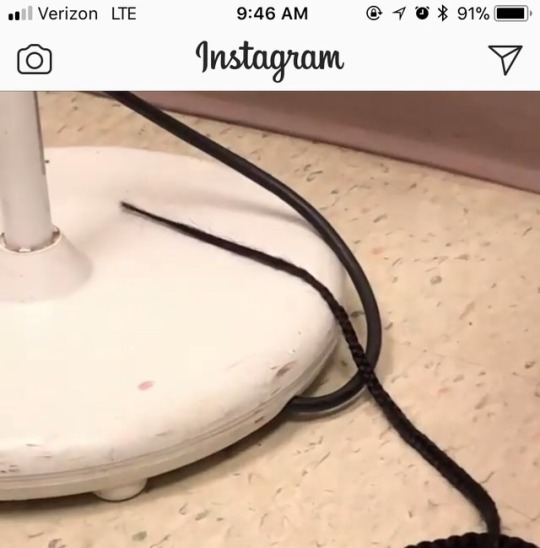

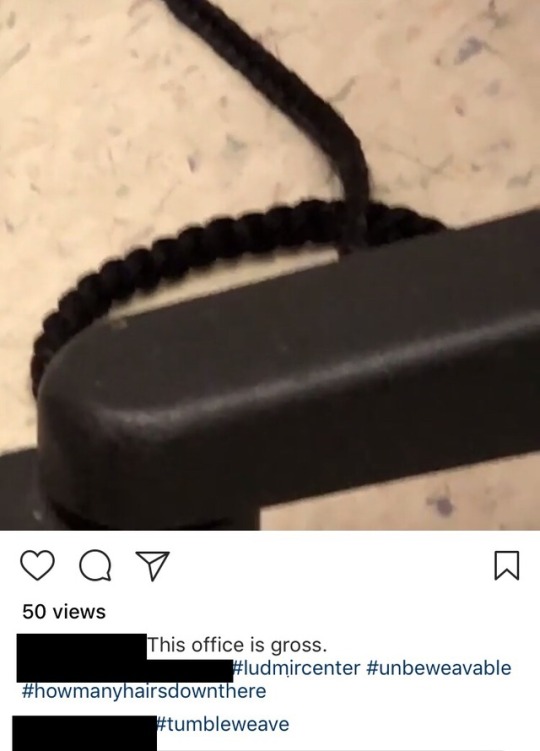
Doctor’s Office Weave
A buddy of mine spotted this in an unlikely place…the Ludmir Center in Philly. There aren’t really health issues with tumble weave, but it makes you wonder what else they are overlooking in this medical facility. Ew.
0 notes
Text
Regional Nodal Control for Head and Neck Alveolar Rhabdomyosarcoma

Publication date: 1 May 2018 Source:International Journal of Radiation Oncology*Biology*Physics, Volume 101, Issue 1 Author(s): Ethan B. Ludmir, Arnold C. Paulino, David R. Grosshans, Mary Frances McAleer, Susan L. McGovern, Winston W. Huh, M. Fatih Okcu, Leslie M. Harrell, Anita Mahajan PurposeTo assess clinical outcomes and patterns of failure, particularly regional nodal control, for pediatric patients treated with proton beam therapy (PBT) for head and neck alveolar rhabdomyosarcoma (HN-ARMS).Materials and MethodsBetween 2006 and 2015, 14 patients with HN-ARMS were enrolled in a prospective registry protocol and treated with PBT at a single institution. Of the patients, 8 (57%) presented with localized disease and 6 (43%) with regional nodal metastases. All patients were treated with systemic therapy per accepted cooperative group regimens. All patients received PBT to the primary site and involved nodal disease with a median dose of 50.4 Gy (relative biological effectiveness). Elective nodal irradiation was not delivered.ResultsThe median follow-up period for surviving patients was 4.3 years. The 5-year overall survival and disease-free survival rates for the cohort (N = 14) were 45% and 25%, respectively. There were 10 relapses in the cohort: 7 regional nodal, 1 combination local and regional nodal, and 2 leptomeningeal. In 6 of 8 patients (75%) with no nodal disease at diagnosis, isolated regional nodal relapse developed. All nodal relapses occurred in first-echelon draining lymph node basins relative to the primary tumor site. Of 6 patients who presented with nodal metastases, 2 had regional nodal relapse; both of these nodal relapses occurred in the same nodal basin that was initially involved by disease but was not completely targeted as part of the primary treatment plan.ConclusionsHigh rates of regional nodal relapse are observed for HN-ARMS patients, including patients with no nodal disease at diagnosis. These data suggest that HN-ARMS patients may benefit from elective nodal irradiation to treat at-risk draining lymph node stations relative to the primary tumor site. We further recommend coverage of the entire nodal level for any sites of initial nodal disease at diagnosis, given the high risk of failure at these sites. https://ift.tt/2pNy0DG
0 notes
Photo

Pepe Ludmir, tremendo maestro de maestros de la televisión 📺 era el señor y patrón de lujo de Panamericana o Canal 5. Lo veíamos todas las noches en el mejor noticiero televisivo setentero: "24 Horas" junto a Ernesto Álvarez Calderón, Pepe Sagar, Manie Rey. Esos eran verdaderos maestros. Pepe Ludmir era también un maestro de ceremonias de lujo y hablaba perfectamente el idioma inglés, no solamente eso, era el único peruano en las premiaciones anuales del Oscar y eso nos enorgullecía y todos los días y a cualquier hora nos informaba de lo que sucedía en tan Magno evento y es que Lima culta era fiel cinéfila e íbamos al teatro 🎭 y las óperas internacionales que se presentaban en Lima. Eran otros tiempos y otra cultura. Los salseros eran considerados hippies o gente marginal o palomilla y mal vistos en la Lima setentera y hablar de Héctor Lavoe era hablar de un forajido y drogadicto, por eso no pasaban Salsa en las radios setenteras salvo uno que otro programete. Aquí en la foto está nuestra cantante Betty Gallegos entrevistada por el gigante Pepe Ludmir, todo un alto nivel. https://www.instagram.com/p/CFxJNSFMLJD/?igshid=155mh6jzdzert
0 notes
Text
Quantifying the benefit of non-small-cell lung cancer immunotherapy.
Quantifying the benefit of non-small-cell lung cancer immunotherapy. Lancet. 2019 Nov 23;394(10212):1904 Authors: Ludmir EB, McCaw ZR, Grossberg AJ, Wei LJ, Fuller CD PMID: 31777387 [PubMed - in process] http://dlvr.it/RKNsV0
0 notes